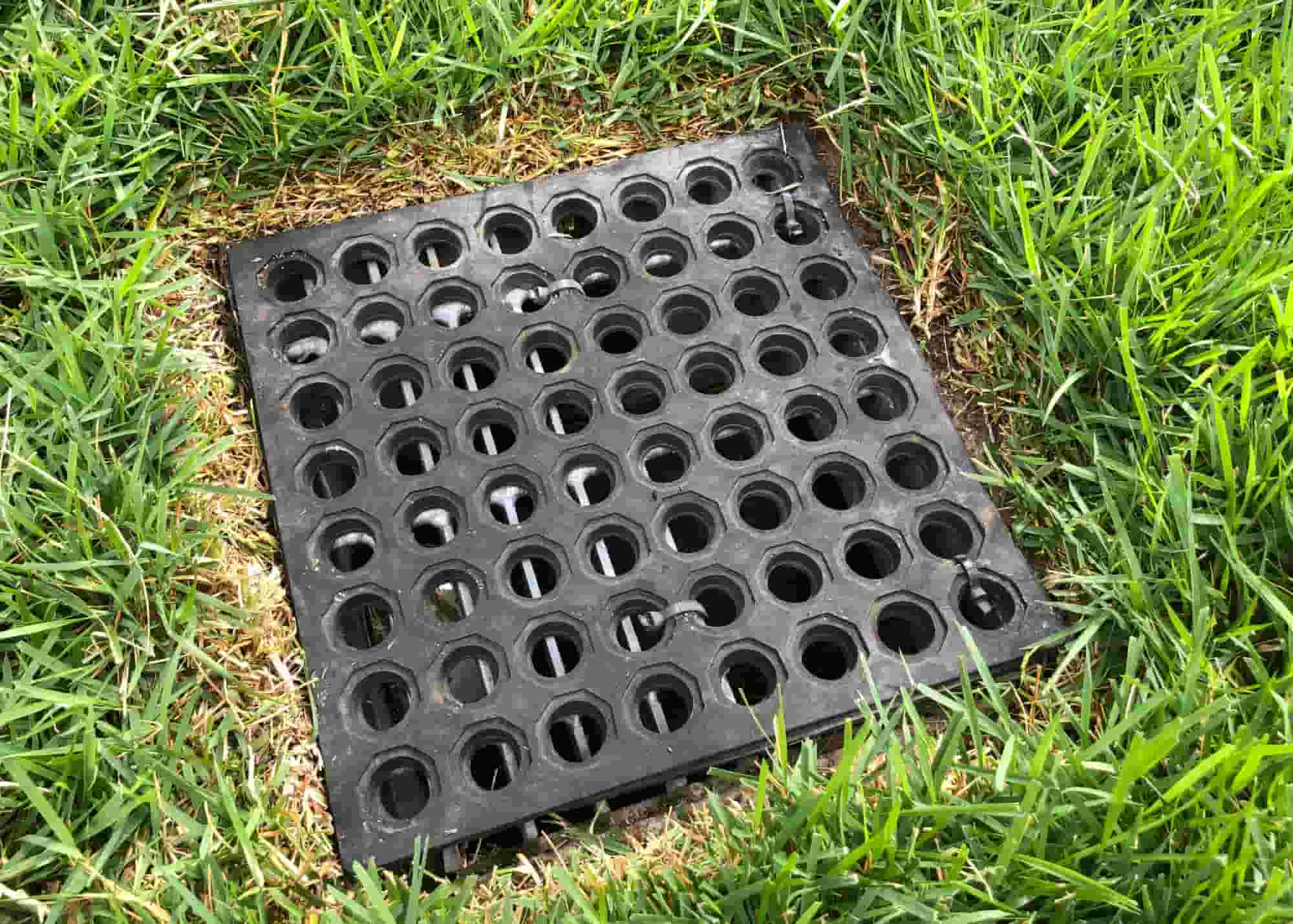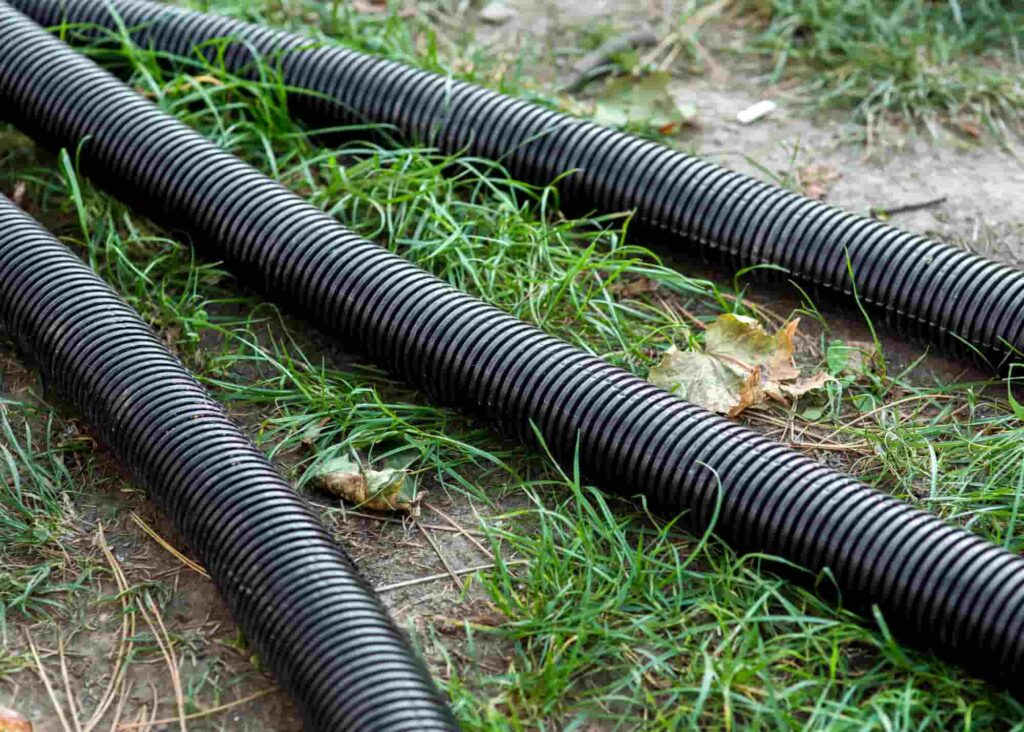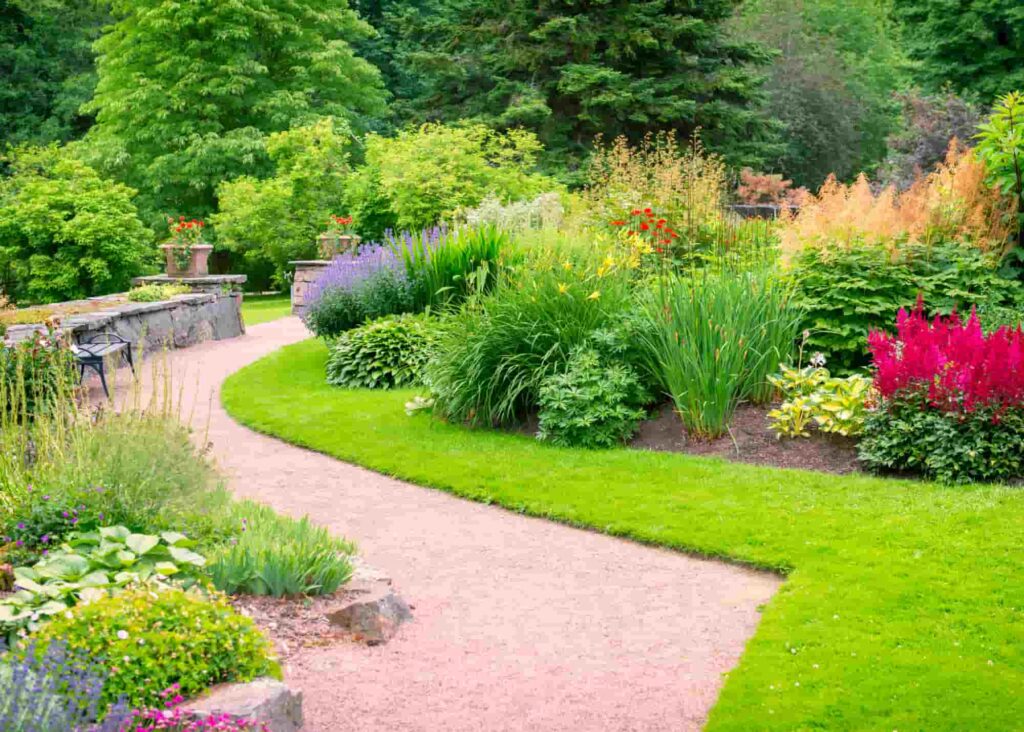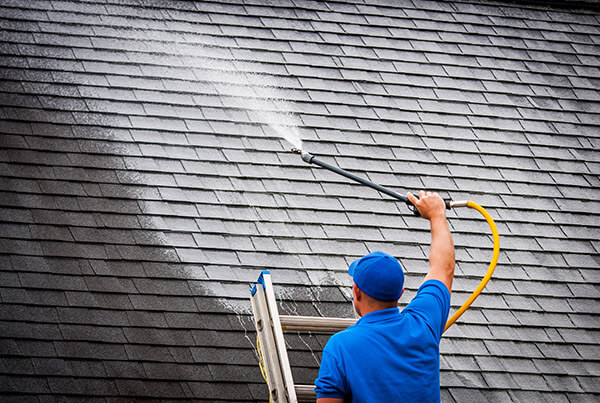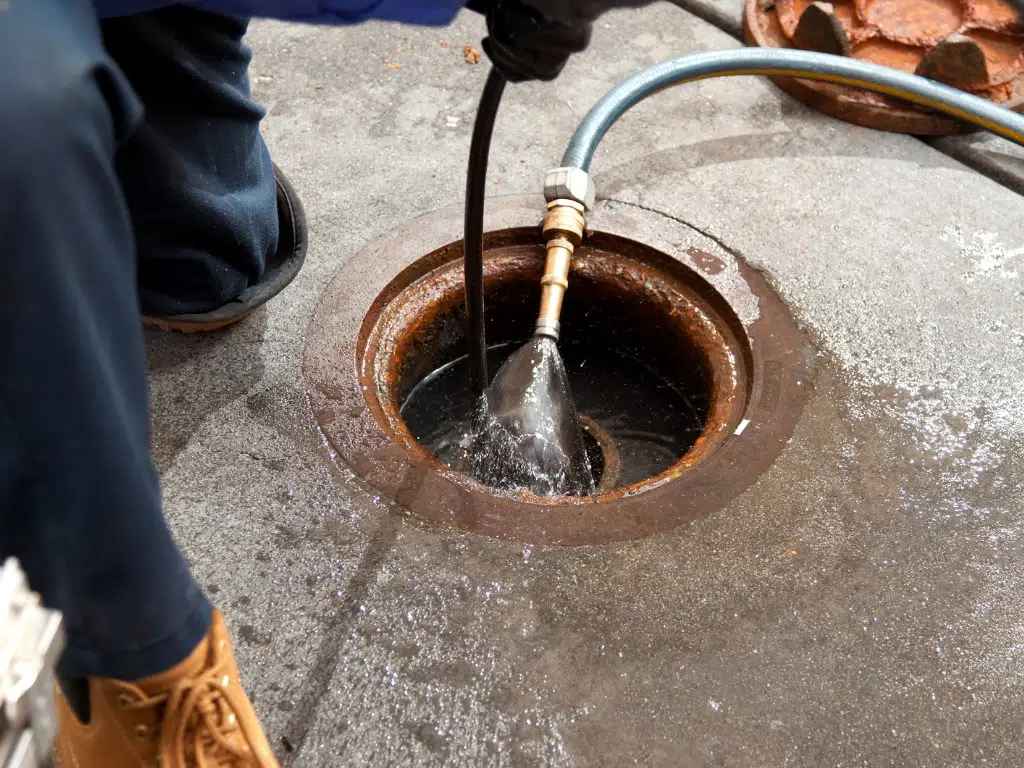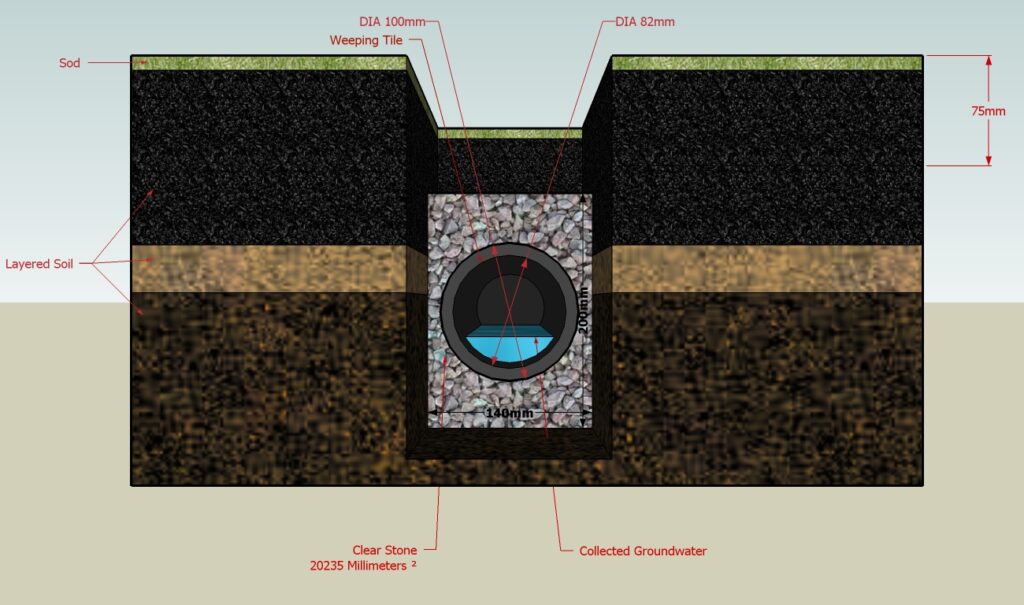If you’re a commercial or residential property owner in the greater Chicago area, you’ve probably experienced the moisture-heavy weather each season can bring to northeastern Illinois.
Rain and snow can contribute to the lush, green appearance of your yard, but this moisture can bring challenges as well. Without the proper backyard drainage system in place, your yard may flood. A flooded yard can bring insect infestation, swamp-like conditions, kill your grass, and even threaten the foundation of your home or business.
The right landscaping professionals can help you explore the many different types of yard drains to find the right commercial or residential backyard drainage solutions for your needs.
Why you need a backyard drainage system
Commercial and residential property owners take pride in their yards. They understand the value of a thriving lawn, and how important external appearances are to the overall value of the property.
A backyard drainage system is a crucial part of the overall health and appearance of your yard. Although you can choose from many different types of yard drains, each provides a solution to issues that can plague your property’s exterior and drive down the property value of your home or business.
Yard drains provide the following benefits to any property:
- Distribution of rainwater runoff
- Flooding prevention
- Foundation protection
- Insect deterrent
- Lawn irrigation
- Mold prevention
- Protection against soil erosion
Different types of yard drains
The type of yard drain that will work best as a residential backyard drainage solution for you will depend on your specific needs. Aesthetics, cost, functionality, maintenance requirements, and your property’s landscape should all factor into your selection. Here are some of the most popular types of drains in the Chicago area and northeastern Illinois.
Rain Garden
Using a rain garden as a yard drainage solution may be a great, cost-effective option for residential property owners. Although this type of yard drain can be a DIY project, a professional landscaping team can help to ensure your rain garden is installed correctly, and seamlessly incorporated into your beautiful landscape.
A rain garden is designed to incorporate 3 main areas: Inflow, basin, and outflow. The inflow is the strategic area of the garden that traps excess water, The basin captures the water, and the outflow allows the water to exit the garden.
The pros of a rain garden include:
- Eco-friendly
- Effective water absorption
- Enhances landscaping
- Fosters plant growth
- Prevents soil erosion
French Drain
The French drain is one of the most popular types of yard drain available for installation in Illinois. This backyard drainage system is cost effective and requires little to no maintenance by property owners. If your property includes a hilly or sloping landscape, the French drain may be the perfect solution.
This type of yard drain is an excellent choice for yards that collect standing water, homes with basements, and backyards with a high flooding risk. It helps reduce the need for expensive water damage repairs and mitigates flooding risks and can enhance property aesthetics.
The French drain is created via a system of deeply dug trenches, downward spouts, and gravel-filled pipes. The gravel in the pipes prevents clay-like soil, debris, and sediment from clogging or damming the flow of water. The yard drainage system then diverts water underground, away from your home, and prevents collection of standing water.
Some of the benefits of the French drain include:
- Contributes to aesthetics (French drains can be covered with landscaping rocks and decorative plants)
- Cost-effective
- Durability (on average, French drains last for several decades)
- Excellent flooding prevention
- Little to no maintenance is required
Dry Well
Rain and snowstorms can become extremely problematic for commercial and residential property owners without the right yard drains in place. Dry wells can provide a way for stormwater runoff to benefit, rather than damage, your lawn.
These drains are installed underground, which alleviates the need to beautify them or stress about incorporating them into the yard’s landscaping.
The dry well is touted by homeowners for its excellence as a residential backyard drainage solution. This solution diverts excess water from your property into an underground dry well, and then redistributes it throughout your yard and provides nourishment for the property’s soil.
Some of the benefits of the dry well include:
- Cost-effective yard drainage solution
- Filtration of water
- Groundwater recharge
- Stormwater management
- Prevents yard debris and sediment from polluting local water ecosystems
Corrugated Pipes
Corrugated pipes are a fantastic backyard drainage system for large yards and properties in rural areas. Gardens, livestock feeding areas, and pastures benefit greatly from these types of yard drains.
Strategic holes are drilled into the pipes to allow for water drainage from your home and topsoil and then fed into the deepest layers of your property’s soil to allow for a healthy, thriving yard and soil ecosystem. Corrugated pipes are installed underground, so won’t take away from a yard’s appearance.
Some of the benefits of corrugated pipes include:
- Easy installation
- Eco-friendly
- Extremely durable
- Flexibility allows pipes to curve underground
- Focused direction of water to yard areas in need
Yard drain FAQ
Does mulch help with drainage?
Mulch absolutely helps with overall yard drainage. It creates small channels between rainwater and topsoil that allows water to flow and reach plant roots. This keeps plants healthy, and reduces waterlogging issues — especially in yards with clay-like soil.
Mulch can be strategically added to gardens and backyard drainage system areas to enhance landscaping aesthetics. Mulch options include eco-friendly organic mulch, wood chips, bark mulch, compost, and more.
What should you put under grass for premium drainage?
Before you lay grass, it’s important to include a layer of helpful drainage solutions to protect topsoil health. Premium drainage requires a shallow trench between grass and deeper layers of soil.
Here are the steps you can take to help keep your soil thriving and prevent standing water and oversaturation of grass:
- Fill the trench with rubble (typically brick)
- Cover that with your choice of a layer of gravel, pea shingle, or sand
- Replace topsoil
- Lay plastic pipe to help with yard drainage
- Lay grass or turf
What can I do about poor drainage in my yard?
Poor yard drainage may mean you need to install a different type of yard drain, and may require a professional landscaping team. However, there are some quick and easy yard drainage solutions that should provide temporary help.
Here are some DIY ideas to help correct the poor drainage in your yard:
- Add topsoil:
If you notice that there are specific spots in your yard that collect rainwater, you may have unhealthy topsoil. Add a new layer of soil to these areas and blend in with your existing landscape. You may find small areas of standing water disappear!
- Dig a creek bed or swale:
You can also dig a shallow, dry creek bed or swale (a shallow trench or channel) to help with yard drainage. During the wet springs and summers of northeastern Illinois, creek beds can help direct storm runoff and other excess water to a desirable exit point. A creek bed can also help with soil irrigation.
Swales can filter out air and debris pollutants, increase water infiltration, and manage water runoff.
- Extend downspouts:
The extension of downspouts can dry out an oversaturated yard or a wet basement. Although a professional landscaping team is the best option to extend your downspouts, this can also be a DIY project.
- Grass aeration:
Aerating your lawn can provide excellent and immediate yard drainage help. Your grass needs air for nourishment and health, and you can facilitate aeration easily. Prior to grass reaching its full growth stage, place holes in your yard using “spike aerators.” These aerators are available at most home and hardware stores.
Connect with Ware Landscaping
If you’re a residential or commercial property owner in northeastern Illinois, Ware Landscaping is the perfect stop for your backyard drainage system needs. We can help you choose from the many types of yard drains that will work best for you.
Our team provides customized residential backyard drainage solutions that blend into your landscaping and help your yard to thrive.
Based in Naperville, we have over two decades of experience helping our Chicago area neighbors install and maintain their yard drains. We can also work with you to build the landscape of your dreams and help you and your loved ones get the most out of your yard.
The health and appearance of your yard depends on an effective drainage system. Let Ware Landscaping help you find the right type of yard drain.
Connect with us for all of your landscaping needs, and check out our website for the many services we offer.

